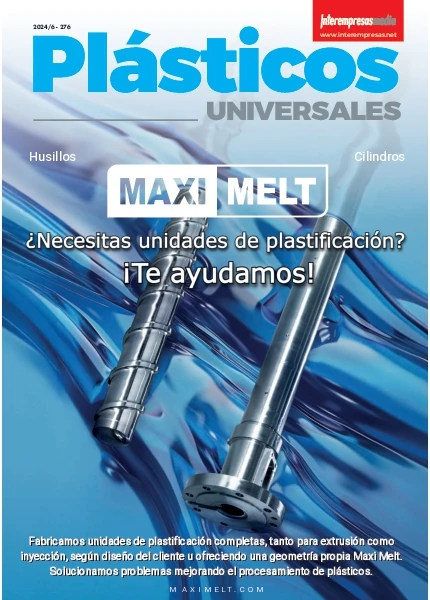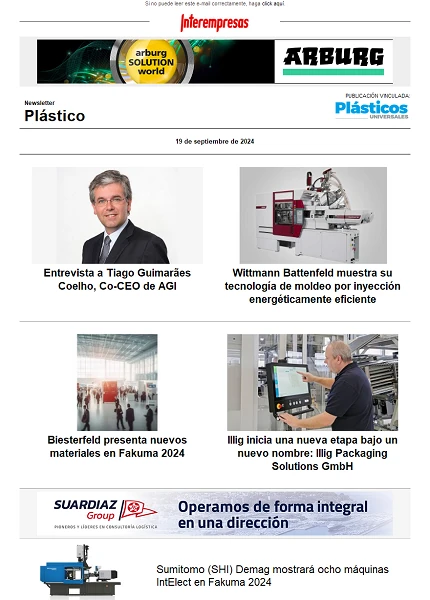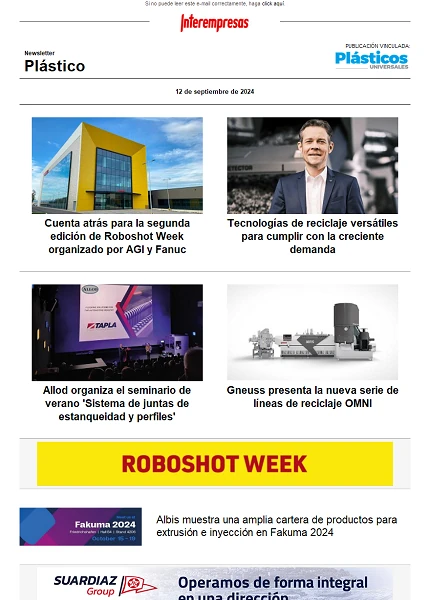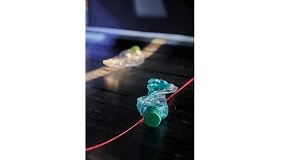Energy saving in machines
April 15, 2010
The use of energy in an efficient manner substantially cut operating costs of our company as well as benefit the environment. As a result, it will also improve the image of our business with the public. Full convergence between the development needs of both business and environment is obvious and essential. The evolution of our company and the sustainable development must go hand in hand.
Larraioz seriously believes in this, and works deeply on the implementation of energy-efficient products. "Today make 'Green Automation' is part of our work", according to the company.

Actuators and linear motors
IAI and LinMot Larraioz products have as a key objective the replacement of traditional pneumatic systems. Both the linear actuators of IAI (Japan) and the linear motor LinMot (Switzerland) using the electrical force as the only source of energy. With these devices we can perform operations as simple as that carried out a pneumatic cylinder, move a mass of one point to another, but the fact that servocontrolados systems will allow us to have total control of parameters of the movement such as the accelerationdeceleration, speed or strength, in addition to infinite positions of destiny, really difficult to achieve with pneumatic solutions. You can also perform more complex functions such as synchronizations and interpolations between different axes, use multiple protocols and communication buses to send sequences of movement, to get a feedback from the current position and State of the actuators...
Undoubtedly the capacity of the IAI and LinMot actuators to replace pneumatic cylinders in benefits. But one of the most concern to the company when it comes to deciding on one and another concept of system is that of the costs, if not the most important today because of the economic situation we live at the international level. Until little was pretty easy to get carried away by the impression of economic output of the pneumatic solutions, with typically initial disbursement top of electrical systems. But it is worth to look at the costs of operation and maintenance of the different options.
With pneumatic systems, a compressor works by electricity to generate the necessary compressed air for these drives. Generated air is supplied through a network of pipes and other circuits of transmission of the air to the cylinders and other pneumatic actuators. It is in these last few devices where this energy is converted into a force of linear motion. This mechanism is subject to a substantial energy loss. According to the technological Institute of Tokyo, the energy efficiency of the pneumatic devices around 14%.
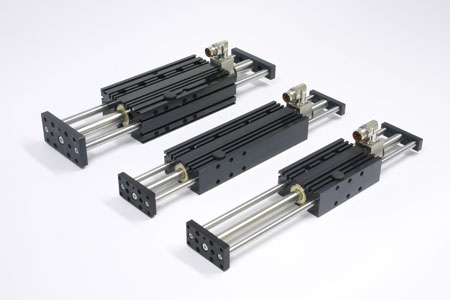
- 50% Of the power is lost in the own air compressor, due to different factors such as the own energy losses of compression of air, the losses of the compressor motor, losses of marcha-paro cycles...
- 16% Of loss of energy in the different pressure valves of reduction and adaptation.
- A 5% loss of energy in the treatment of the air, filters,...
- 15% Loss of energy in the own pneumatic actuator.
Of course we must take into account the cost of the overall installation, not only of the pneumatic cylinder, but whole comprising the compressor, pneumatic installation of pipes for the company, filters,... And the compressed air is not free. The economic cost of generation of 1 Nm3 of compressed air cost the company around 0,013 euros according to data from suppliers of pneumatic facilities (based on an estimate of cost of kWh to € 0.12).
In addition, always compressed air systems have leaks. Currently many facilities suffer losses by leakage represents between 25% and 30% of the total consumption of the compressor. A hole about 1 mm in diameter in the air circuit is a leak of 3.5 Nm3/h of air, resulting in a loss to the company of 300 euros per year. Will if the escape is through a 5 mm hole, the loss of 85 Nm3/h we mean a whopping of 7,300 euros per year!
Energy saving
In the electric actuators of IAI, the speed of rotation of the rotating electric motor mechanically become force of linear motion through a system of energy-efficient transmission. In the case of the linear motor LinMot, where electric energy of the engine itself is transformed into a linear work, there is not even a mechanical system of transmission of force circular-lineal. The energy efficiency of electric actuators of IAI and LinMot round between 80% and 92%, resulting in energy costs of operation from one third and one-tenth of what would be the energy bill of pneumatic systems.
The pneumatic cylinder obtains the energy through the pressure of a compressed on a piston air flow. All phases of movement, acceleration, steady speed and deceleration consume power produced by the compressor from electricity. The energy difference between the consumed and produced in the movement directly translates into losses, as pneumatic systems can not return energy to the compressor. On the other hand, actuators of IAI and LinMot used directly energy directly from the mains with a high degree of efficiency, consuming only at stages where there is really working, i.e. at stages of acceleration, and also by returning to the driver the energy produced in the stages of deceleration.
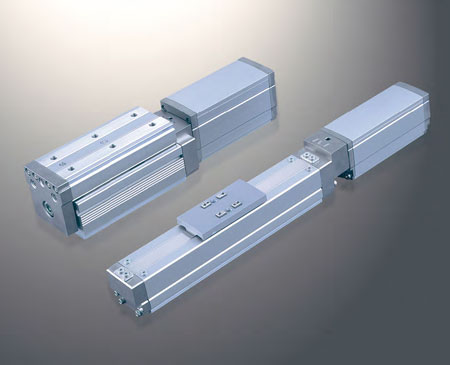
We can assess the difference in energy costs through an example. We choose for repetitive work of displacement of 15 kg of weight 400 mm back and forth, with intermediate stop cycles of 500 ms, and involving a total cycle time of 2 seconds (30 complete cycles per minute). To do this we will compare the results of a pneumatic cylinder with LinMot solution.
If we want to move the mass of 15 kg a distance of 400 mm at 500 ms we need reach a speed of 1 m/s, what find us in a pneumatic cylinder of 50 mm internal diameter at least. Each cycle is in a volume of air of 10 litres, and assuming operating year 8,000 hours, we will have 24,000 m3 of air at 6 bar per year (145,000 m3 of air to 1 bar), approximately 25,600 kWh of energy consumed, or what is the same, 3,072 euro annual cost of electricity to maintain this pneumatic device.
A solution with LinMot linear motor type find us with a power of less than 100 W engine, an annual energy consumption of 800 kWh, and an energy bill of 98 euros per year.
With the choice of actuator LinMot investment costs have been higher than the initial costs of the pneumatic solution, but the difference has been amortized in just 5 months of operation. After 12 months of activity, the LinMot solution resulted in a saving of 1,750 euros compared to the pneumatic cylinder.
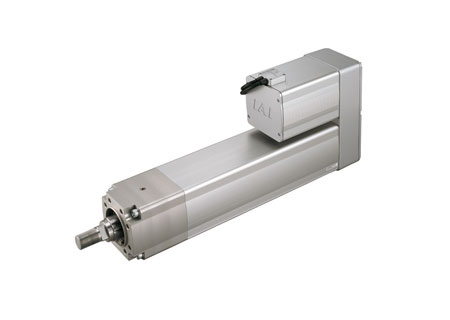
Easy adjustment of speed and thrust
But not all benefits are derived from the energy savings. A well known manufacturer of automobile opted to IAI solutions from previous installations of pneumatic. The client application consisted of a system for heating and endorse ducts (tubes of resin). To move the cutter of warming and ducts used actuators Robocylinder of IAI, obtaining a good repeatability of movement and completing the task successfully.
In the pneumatic system, adjust the speed and strength of pressure during the Union of the ducts is complicated and cumbersome. This caused problems of accession and the ratio of defects came to the not inconsiderable 10%. Unlike the pneumatic solution, the Robocylinder system provides easy adjustment of speed and thrust, as well as a high repeatability. As a result the ratio of defects was reduced to 3%.
With a production of 240,000 pieces/year and a piece of 1.2 euros cost manufacturer, the pneumatic solution supposed you loss of 28,800 euros/year versus the 8.640 euros of loss attributable to the Robocylinder solution, i.e.an improvement of profitability of more than 20,000 euros.
A parameter to take into account is that of the useful life of the different devices and their maintenance. The estimation of life of a pneumatic cylinder of less than 100 mm tour is 25 million cycles, or 10,000 km to race more than the 100 mm cylinders The useful life of the actuators for LinMot enters a fork of between 500 and 1000 million cycles. A solution of pneumatic executing 1 cycle per second do not stand a year, compared with 15-20 years of operation of the actuator LinMot hope.
All IAI Robocylinders available as a standard of AQ seal, which consists of a band of resin impregnated of solidified lubricant. This innovative technology of lubrication ensures a necessity of maintenance for 5,000 km of displacement or 3 years.
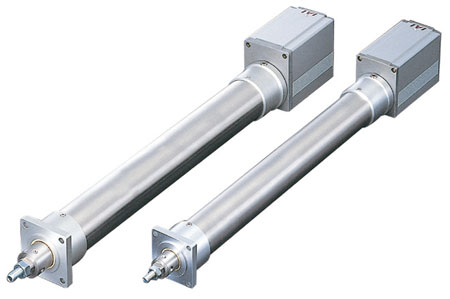
Reduction of emissions of CO2
Within the context of important international agreements as the Kyoto Protocol, of which Europe is one of the main drivers, the reduction of emissions of CO2 has become a priority political and public. The production of CO2 from energy-producing plants depends on the primary fuel used and the efficiency of energy conversion factor. Clearly, the commitment of European Governments by means of cleaner energy production, and they are beginning to proliferate the wind and solar parks, combined-cycle power plants,... but today there is much work to do and the energy produced by fossil fuel power plants is a really important fractionreaching more than 90% of total in some countries of the EU-15. According to data from the Frauhofer Institute (Germany), for an average of 0.39 energy efficiency factor, we find emissions of CO2 515 grams-890 grams for the generation of 1 kWh of electricity from power stations of combustion of natural gas and coal combustion plants respectively.
A pneumatic solution as described involving an annual consumption of 25,600 kWh of energy, above, will emit into the atmosphere between 12 and 22 tons of CO2, against the emissions of CO2 between 0.4 and 0.7 t of the IAI and LinMot actuators. And we multipliquemos this by the number of units you have in your company...
Use energy efficiently and rational, choosing the most appropriate automation solutions for each case, not only help your company, helps us all.


